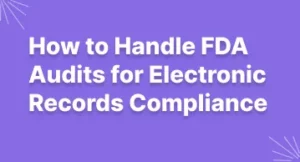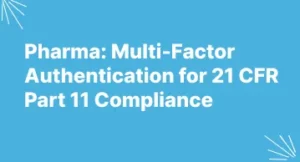Welcome to our guide on transitioning your medical devices to Europe’s New Medical Device Regulation (MDR)! This guide will provide an overview of the new European Medical Device Regulation, why manufacturers should be transitioning their devices now, and a detailed break down of the steps necessary to ensure successful transition and compliance. It is essential that medical device manufacturers understand the requirements of the MDR in order to remain compliant in Europe, and this guide is designed to help you do just that.
We will discuss the implications of the new regulations and what manufacturers need to be aware of if they are to remain compliant. The importance of compliance with the MDR cannot be overstated, so it is important to make sure your transition to the MDR is done correctly and efficiently. We will discuss the key points of the MDR, an overview of the transition process, and the technical documentation requirements essential for compliance.
Additionally, we will provide an overview of the classification system, recommendations for meeting quality management system requirements, and an overview of labeling and packaging requirements. We will also provide a summary of UDI & EDID requirements and an outline of steps that manufacturers can take to ensure full and rapid compliance with the MDR before its transition deadline. By the end of this guide, you will be fully prepared to transition your medical devices to the MDR in accordance with the set timeline and all applicable regulations.
The European Medical Device Regulation: What is it and What Does it Mean for Manufacturers?
The European Medical Device Regulation (MDR) was established in 2017 and is a set of regulations designed to strengthen controls on the safety and performance of medical devices distributed in the European Union. This regulation replaces two earlier regulations from 1993 and 2007, and its strict requirements apply to all medical device manufacturers.
Under the MDR, medical device manufacturers must demonstrate that their products meet essential safety and performance requirements before they can be placed on the market. Additionally, manufacturers must follow up and continuously monitor their products to ensure that they remain safe and effective throughout their life cycle.
The timeline for the transition of medical devices from the old regulations to the new MDR starts on May 26, 2020. All medical devices that are already on the market must comply with the MDR by the deadline, and new products must be compliant before they may be released into the market.
The MDR has important implications for medical device manufacturers, as they must take steps to ensure compliance and avoid regulatory fines and business disruptions.
One of the key reasons why manufacturers should begin transitioning their medical devices to the new European Medical Device Regulation (MDR) is due to the fact that it has a strict deadline for full compliance. The MDR was implemented in May of 2020, with manufacturers having three years to transition their devices to the new standards. This means that all manufacturers must achieve full compliance with the MDR by May 2023, in order to continue to market and distribute their products in Europe.
If manufacturers do not transition their devices in time, they run the risk of non-compliance with European standards and will be unable to sell their products in the EU. Additionally, manufacturers could face heavy financial penalties for non-compliance with the MDR. Therefore, it is important for medical device manufacturers to take the necessary steps to transition their devices now, in order to avoid these risks and ensure continued success in the European market.
Transitioning to the MDR
Transitioning to the MDR requires a lot of preparation and research. Manufacturers will need to understand how the regulation applies to their specific medical devices in order to ensure successful transition.
The transition process itself can be broken down into the following steps:
- Research and understanding of the new regulations
- Classification of the device, based on the risk it poses to the user
- Technical documentation review and update to meet MDR requirements
- Development of a quality management system that meets MDR requirements
- Labeling and packaging requirements review and updates
- Unique device identification (UDI) and European databases (EDID) updates
- Clinical evaluation and post-market vigilance requirements review and updates
These are the necessary steps in order to transition your medical devices to the MDR. It is best practice to start the transition process as soon as possible to give your business plenty of time to make the necessary changes without having to rush.
The Technical Documentation Requirements of the MDR are critical for any manufacturer to understand. These requirements spell out exactly what type of technical documentation must be provided in order to demonstrate conformity with the MDR. This includes pre-clinical studies, design and development procedures, product specifications, applicable standards, risk management activities and post-market surveillance plans. Manufacturers who do not properly document their devices will likely find they do not comply with the MDR and may need to engage in an extensive process in order to bring their devices into compliance. It is thus extremely important for manufacturers to double check that all required documents are available and up to date before submitting their device for a CE mark.
Understanding the MDR’s Classification System
The European Medical Device Regulation (MDR) has implemented a classification system that defines the criteria for differentiating between medical devices with varying degrees of risk to patients and users. This system differs from the previous version, which only had two categories. Now there are four levels of classification in the MDR.
Medical device manufacturers need to determine which class their device belongs to in order to comply with the MDR. The four classes are:
- Class I (low risk)
- Class IIa (moderate risk)
- Class IIb (moderate to high risk)
- Class III (high risk)
The type of device will determine which class it belongs to. Devices that are designed for a critical or life-saving purpose typically belong to the higher classes, while those with a lesser risk profile usually belong to the lower classes.
For example, the Class III designation is generally given to devices that are implanted inside the body, like pacemakers, or to devices that are used to treat life-threatening illnesses, such as heart stents or insulin pumps. On the other hand, Class I devices may include items like bandages, splints, and crutches.
In addition to determining the appropriate class for the device, manufacturers should also be familiar with the criteria that must be met for each class in order to ensure full MDR compliance. This includes specific requirements related to labeling, packaging, and quality management systems.
For manufacturers to meet compliance with the MDR, they must have an established Quality Management System (QMS) in place. A QMS helps organizations identify and reduce risks, keeps organized backups of important documents related to their product, and establishes how a product is developed, manufactured, and maintained. It also allows organizations to answer customer and regulatory questions about their product.
The MDR requires that medical devices have a QMS that meets certain requirements. This includes having procedures in place for designing and manufacturing the device, responding to service request and field safety corrective action requests, and ensuring quality control of all device components and materials. Manufacturers must also be able to demonstrate compliance with applicable safety and performance requirements, and all applicable laws and regulations for a medical device.
Manufacturers should document their QMS and create policies and procedures for how their organization operates, along with any necessary records. This will help ensure that all personnel are working towards the same goals and that the organization is compliant to the MDR standards. Additionally, manufacturers should review their QMS regularly, at least every five years, to ensure it meets the current MDR requirements.
Labeling and Packaging Requirements Under the MDR
European Medical Device Regulation (MDR) sets very strict requirements for labeling and packaging of medical devices. It is essential for manufacturers that they become familiar with all of the requirements and ensure that they are followed in order to stay compliant. This includes requirements such as the use of barcodes, or the inclusion of specific information on labels.
Under the MDR, a manufacturer must have a package label that includes the following information:
- The name of the device, including any risk classifications assigned to it
- A unique device identification (UDI) for each device in the package
- A bar code label, if necessary, which includes the UDI
- The batch number, lot number, or serial number, if applicable
- The name and address of the manufacturer
- Instructions for use (if applicable)
- Any warnings or cautions regarding the device’s use and storage
In addition to this information, the package must also include a list of materials used to make up the device, its shelf-life, instructions on storage and disposal of the device, and a contact number for the manufacturer in case any questions arise.
It is also important to note that the MDR requires that the package meet certain standards of strength, moisture protection, and tamperproofing, among others. It is the responsibility of the manufacturer to ensure that their medical device’s packaging meets all of these requirements.
UDI & EDID Requirements Under the MDR
The European MDR places significant importance on Unique Device Identification (UDI) and Electronic Data Interchange (EDID). This identification system helps to facilitate traceability of medical devices on the market, as it allows for each device to be identified uniquely. It is also used to monitor safety signals form the market and provides transparency for stakeholders.
To comply with the MDR, manufacturers must establish and maintain a UDI system, which allows for the identification of medical devices throughout their lifecycle. This includes having a globally unique number allocated to each device, generating unique identifiers for the device’s components, and clearly indicating the UDI on the labels and packaging.
In addition to this, the MDR also requires that manufacturers transmit EDID to the Competent Authority whenever changes are made to a device’s data or declaration of conformity. The EDID must include various technical information about the device and its components.
Failure to comply with these requirements may result in a product not being accepted for sale within Europe. Therefore, it is important for manufacturers to ensure that all of their products have the correct UDI information and that any changes to the devices are properly documented and submitted.
Clinical Evaluation and Post-market Vigilance Requirements under the MDR
Under the new Medical Device Regulation (MDR), all medical device manufacturers must ensure clinical evaluation and post-market vigilance for their products. Clinical evaluation is the process of collecting, monitoring, and assessing clinical data related to the safety and performance of a medical device, as well as the potential risks associated with it. The results of this evaluation are then used to assess the risk-benefit ratio of the device.
As part of clinical evaluation, device manufacturers must also undertake post-market vigilance activities to ensure that the device remains safe and effective throughout its entire lifespan. This includes regularly monitoring adverse events associated with the device, as well as any changes in its safety profile or performance.
In order to comply with the requirements of the MDR, manufacturers should take the following steps:
- Develop a plan for ongoing clinical evaluation and post-market vigilance of the device.
- Ensure that patient safety is of paramount importance when conducting clinical trials and evaluations.
- Implement appropriate measures to collect, analyze, and report on complaints and incidents associated with the device.
- Establish effective and efficient systems for considering changes to the device’s safety or performance profile.
By taking the above steps, manufacturers can ensure full and rapid compliance with the MDR, as well as protect the safety and efficacy of the devices they produce.
Steps to Ensure Full and Rapid Compliance with the MDR
As the Medical Device Regulation (MDR) transition deadline is quickly approaching, manufacturers should take the necessary steps to ensure full and rapid compliance. This process begins with obtaining the latest information on the regulatory requirements for the MDR, such as technical documentation requirements, quality management system requirements, labeling and packaging requirements, UDI & EDID requirements, and clinical evaluation and post-market vigilance requirements.
Once these requirements are understood, manufacturers should then assess any gaps in their existing processes or procedures to ensure that they are compliant with the MDR. Additionally, they should consider any changes that will need to be made to their processes or products to meet the new regulation. Manufacturers must also ensure that all personnel involved in the process of complying with the MDR are adequately trained and informed about any changes to their processes or products.
Finally, manufacturers should plan for a comprehensive testing phase to verify that their device fully meets the requirements of the MDR. This should include both laboratory testing to verify performance parameters and market surveillance activities to ensure that the device is safe for use. As part of this testing phase, manufacturers should also prepare a detailed transition plan that outlines the timeline and steps that they need to follow in order to meet the transition deadline.
By following these steps, manufacturers can ensure that they are compliant with the MDR and can make a successful transition to the new regulation.
Reaping the Benefits of Complying with MDR Before Transition Deadline
There are a number of benefits to ensuring full and timely compliance with the MDR before the transition deadline. Firstly, manufacturers can prevent any disruption in their ability to trade and distribute their devices within Europe’s borders. Secondly, MDR compliance allows manufacturers to demonstrate their commitment to ensuring the safety of their products and the health of the overall patient population.
By complying with the MDR prior to the transition deadline, manufacturers can also have the peace of mind in knowing that their products meet the required standards for quality and safety. Additionally, being compliant with the MDR will also ensure that manufacturers have access to the latest cutting-edge regulatory requirements and can take advantage of any new opportunities that may arise due to the changing market landscape.
Following MDR requirements can also help manufacturers gain a competitive edge over their competitors by showing that they are committed to providing the safest and most effective products to patients. Finally, ensuring MDR compliance before the transition deadline can help manufacturers save resources by avoiding costly investigations and/or product recalls due to non-compliance.
Are You Prepared to Transition Your Medical Devices to Europe’s New Medical Device Regulation (MDR)?
1. What is the Medical Device Regulation (MDR)?
The Medical Device Regulation (MDR) is the new European medical device regulation which replaces the current medical device directives (MDD). The MDR regulations aim to strengthen patient safety, ensure consistent quality in medical devices across Europe, and provide market access for innovative medical technologies.
2. When does the MDR go into effect?
The MDR was published on May 5th 2017, and takes into effect on May 25th 2020.
3. What is the scope of the MDR?
The MDR applies to all medical devices that are sold in the EU, as well as any products classified as part of a “medical system” or “functional unit.
4. Are there any exceptions to the MDR?
Yes, there are certain medical devices that are exempt from MDR requirements, such as those used solely in home healthcare settings, those for research use only, or certain types of medical lamps or lenses.
5. How do I know if the transition to the MDR needs to be made?
If your medical device is being sold in the EU, or otherwise classified as part of a “medical system” or “functional unit,” then you need to ensure that the device complies with the new regulations.
6. What is involved in the transition to the MDR?
The transition to the MDR requires a comprehensive assessment and compliance strategy, documents such as new technical files and labelling requirements, clinical data, and evidence of adequate software validation and implementation plans.
7. What assistance is available to help businesses with the transition?
There are companies that specialize in providing guidance and support throughout the process of transitioning to the new MDR regulations, such as PS/TS Certification Bodies and Notified Bodies, regulatory consultants, and legal advisors.





